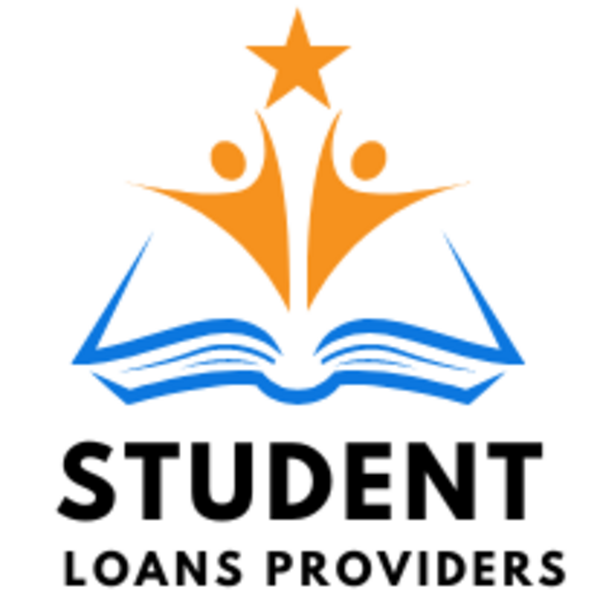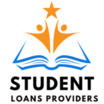Teacher Loan Forgiveness
Educators play an indispensable role in shaping society by nurturing future generations. However, the financial burdens often associated with pursuing a career in teaching can be daunting. In recognition of their invaluable contributions, various loan forgiveness programs have been established to alleviate the financial strain on teachers. Among these programs, Teacher Loan Forgiveness stands out as a beacon of hope, offering educators a pathway to financial freedom while continuing to make a difference in the lives of students.
Understanding Federal Teacher Loan Forgiveness Program
The Federal Teacher Loan Forgiveness Program is a cornerstone of financial support for educators across the United States. Administered by the U.S. Department of Education, this program aims to incentivize teachers to work in high-need areas by offering forgiveness on a portion of their federal student loans. By fulfilling the requisite teaching service requirements, educators can qualify for forgiveness ranging from $5,000 to $17,500, depending on their subject area and qualifications.
Qualifications and Eligibility Criteria
Before delving into the intricacies of Teacher Loan Forgiveness, it's crucial to understand who qualifies for this program. Eligibility typically hinges on several factors, including the type of loans held, years of service in eligible schools, and teaching credentials. Generally, educators must work full-time for five consecutive years in a low-income school or educational service agency to qualify for loan forgiveness.
Common Misconceptions about Teacher Loan Forgiveness
Despite its benefits, Teacher Loan Forgiveness is often shrouded in misconceptions that may deter educators from exploring this avenue of financial relief. One prevalent myth is that loan forgiveness is guaranteed after five years of teaching. In reality, eligibility criteria must be met, and specific guidelines followed to qualify for forgiveness. Additionally, some teachers mistakenly believe that private loans are eligible for forgiveness under federal programs, which is not the case.
Impact of Teacher Loan Forgiveness on Education
The impact of Teacher Loan Forgiveness extends far beyond individual educators—it reverberates throughout the education system, benefiting students, schools, and communities. By alleviating financial stress, this program enables teachers to focus wholeheartedly on their craft, resulting in improved morale and job satisfaction. Furthermore, loan forgiveness incentivizes talented educators to remain in high-need schools, thereby enhancing educational outcomes for underserved students.
Alternatives to Federal Loan Forgiveness Programs
While the Federal Teacher Loan Forgiveness Program is a widely utilized option, it's not the only avenue available to educators seeking financial relief. Alternative programs, such as state-specific loan forgiveness initiatives and the Public Service Loan Forgiveness Program, offer additional opportunities for educators to reduce their student loan debt. Exploring these alternatives can help teachers identify the best strategy to achieve their financial goals.
Tips for Maximizing Loan Forgiveness
Navigating the intricacies of Teacher Loan Forgiveness can be challenging, but with the right approach, educators can maximize their benefits. One tip is to familiarize oneself with the program requirements early on and maintain accurate records of teaching service and loan repayment. Additionally, seeking guidance from financial aid counselors or education associations can provide invaluable support throughout the process.
Testimonials from Educators Who Benefited
Real-life testimonials from educators who have successfully navigated the Teacher Loan Forgiveness process offer valuable insights and inspiration to others. These firsthand accounts shed light on the transformative impact of loan forgiveness, empowering fellow educators to pursue financial relief with confidence and determination.
Challenges Faced by Teachers Seeking Loan Forgiveness
While Teacher Loan Forgiveness offers significant benefits, it's not without its challenges. From navigating complex eligibility criteria to overcoming bureaucratic hurdles, educators may encounter obstacles along the way. Addressing these challenges requires resilience, patience, and a proactive approach to seeking assistance when needed.
The Economic Impact of Teacher Loan Forgiveness
Beyond its immediate benefits to individual educators, Teacher Loan Forgiveness has broader economic implications. By reducing the financial burden on teachers, this program stimulates economic growth by freeing up resources that can be reinvested in local communities. Moreover, by retaining talented educators in high-need areas, loan forgiveness contributes to long-term educational and socioeconomic development.
Navigating Loan Forgiveness for Different Teaching Roles
Teachers occupy diverse roles within the education system, each with its own set of challenges and opportunities for loan forgiveness. Whether teaching in elementary schools, high schools, or special education settings, educators must understand how their specific role impacts eligibility for loan forgiveness and tailor their approach accordingly.
State-specific Teacher Loan Forgiveness Programs
In addition to federal programs, many states offer their own teacher loan forgiveness initiatives tailored to local needs and priorities. Educators should familiarize themselves with these state-specific programs, as they may offer additional benefits or eligibility criteria not covered by federal programs.
Recent Changes and Updates in Teacher Loan Forgiveness Policies
As with any government program, Teacher Loan Forgiveness policies are subject to change over time. Staying informed about recent updates and policy changes is essential for educators navigating the loan forgiveness process, as it ensures compliance with the latest requirements and maximizes their chances of success.
Resources and Support for Teachers Applying for Loan Forgiveness
Fortunately, educators do not have to navigate the loan forgiveness process alone. A wealth of resources and support services are available to assist teachers at every step of the journey. From online guides and toolkits to personalized counseling services, these resources empower educators to make informed decisions and navigate the complexities of loan forgiveness with confidence.
Teacher Loan Forgiveness vs. Public Service Loan Forgiveness
While Teacher Loan Forgiveness is tailored specifically to educators, the Public Service Loan Forgiveness Program offers broader eligibility criteria for loan forgiveness across various public service professions. Educators should carefully weigh the pros and cons of each program to determine which aligns best with their career goals and financial circumstances.
The Role of Teachers Unions in Loan Forgiveness Advocacy
Teachers unions play a vital role in advocating for policies that support the financial well-being of educators, including loan forgiveness initiatives. By leveraging their collective bargaining power and political influence, unions can advance the interests of teachers and ensure equitable access to loan forgiveness programs.
Legal Considerations in Teacher Loan Forgiveness
Navigating the legal landscape of teacher loan forgiveness requires careful attention to detail and compliance with relevant regulations. Educators should familiarize themselves with the legal considerations associated with loan forgiveness, including potential tax implications and contractual obligations.
Impact on Teacher Recruitment and Retention
Teacher loan forgiveness programs play a crucial role in attracting and retaining talented educators, particularly in high-need areas where teacher shortages are most acute. By offering financial incentives and support, these programs bolster recruitment efforts and improve retention rates, ultimately enhancing the quality of education for all students.
Comparing Teacher Loan Forgiveness Globally
While Teacher Loan Forgiveness is a hallmark of education policy in the United States, similar initiatives exist in other countries around the world. Comparing and contrasting these programs offers valuable insights into different approaches to supporting educators financially and their respective impacts on education systems.
Future Prospects and Trends in Teacher Loan Forgiveness
As education policy evolves and economic conditions change, the landscape of teacher loan forgiveness is likely to undergo further transformation. Educators should stay attuned to emerging trends and future prospects in loan forgiveness to adapt their strategies and maximize their benefits effectively.
Apply for Teacher Loan Forgiveness
Armed with a comprehensive understanding of Teacher Loan Forgiveness and its associated benefits, educators are well-equipped to embark on their journey towards financial relief. By taking proactive steps to meet eligibility criteria, seeking support from relevant resources, and staying informed about policy changes, teachers can navigate the loan forgiveness process with confidence and secure a brighter financial future while continuing their invaluable contributions to education.
Commonly Asked Questions and answer Teacher Loan Forgiveness
What is Teacher Loan Forgiveness?
Teacher Loan Forgiveness is a federal program that helps eligible teachers to have a portion of their federal student loans forgiven in exchange for teaching in low-income schools.
Who qualifies for Teacher Loan Forgiveness?
Teachers who work in qualifying low-income schools and meet other specific criteria may qualify for Teacher Loan Forgiveness. Typically, one must teach full-time for five consecutive years.
What types of loans are eligible for forgiveness under this program?
Direct Subsidized and Unsubsidized Loans, as well as Subsidized and Unsubsidized Federal Stafford Loans, can be eligible for Teacher Loan Forgiveness.
How much loan forgiveness can a teacher receive?
Depending on the subject taught and the level of certification, eligible teachers can receive forgiveness of up to $17,500 on their Direct Subsidized and Unsubsidized Loans.
Do private loans qualify for Teacher Loan Forgiveness?
No, private loans are not eligible for Teacher Loan Forgiveness. Only federal loans under specific programs qualify.
Can special education teachers qualify for higher loan forgiveness amounts?
Yes, in certain cases, special education teachers may qualify for up to $17,500 in loan forgiveness, regardless of the subject they teach.
Is there a specific timeframe for completing the five years of qualifying teaching service?
The five consecutive years of teaching service must be completed after the 1997-98 academic year and before the end of the school year in which you apply for loan forgiveness.
Can teachers who work part-time qualify for Teacher Loan Forgiveness?
Generally, only full-time teachers are eligible for Teacher Loan Forgiveness. Part-time teachers may qualify if they work at least the equivalent of full-time hours based on their school's policy.
What if a teacher taught at multiple qualifying schools during the five-year period?
If a teacher worked at multiple qualifying schools, the time spent at each school may count towards the required five years, as long as the combined service meets the criteria.
Are teachers required to make payments during the five-year teaching period?
Teachers are required to make 120 qualifying monthly payments under a qualifying repayment plan during the five-year period, but not necessarily consecutively.
Can a teacher receive Teacher Loan Forgiveness and Public Service Loan Forgiveness?
Yes, it is possible for a teacher to qualify for both Teacher Loan Forgiveness and Public Service Loan Forgiveness, but not for the same period of teaching service.
What happens if a teacher doesn't complete the full five years of teaching service?
If a teacher doesn't complete the required five years of teaching service, they may not be eligible for the full amount of loan forgiveness, but may still qualify for a partial forgiveness based on the completed years.
Is Teacher Loan Forgiveness considered taxable income?
No, Teacher Loan Forgiveness is not considered taxable income.
Can teachers who already received loan forgiveness under another program apply for Teacher Loan Forgiveness?
In most cases, a teacher who has already received loan forgiveness under another program may not receive additional forgiveness under the Teacher Loan Forgiveness program for the same period of service.
Can teachers apply for Teacher Loan Forgiveness while still in their five-year teaching commitment?
Teachers can apply for Teacher Loan Forgiveness after completing the full five years of qualifying teaching service.
What documentation is required when applying for Teacher Loan Forgiveness?
Teachers need to provide documentation of their teaching service, including certification from the school or district verifying the qualifying employment.
Can teachers with Perkins Loans qualify for Teacher Loan Forgiveness?
Yes, teachers with Perkins Loans may be eligible for loan cancellation for their Perkins Loans if they meet the requirements for Teacher Loan Forgiveness.

